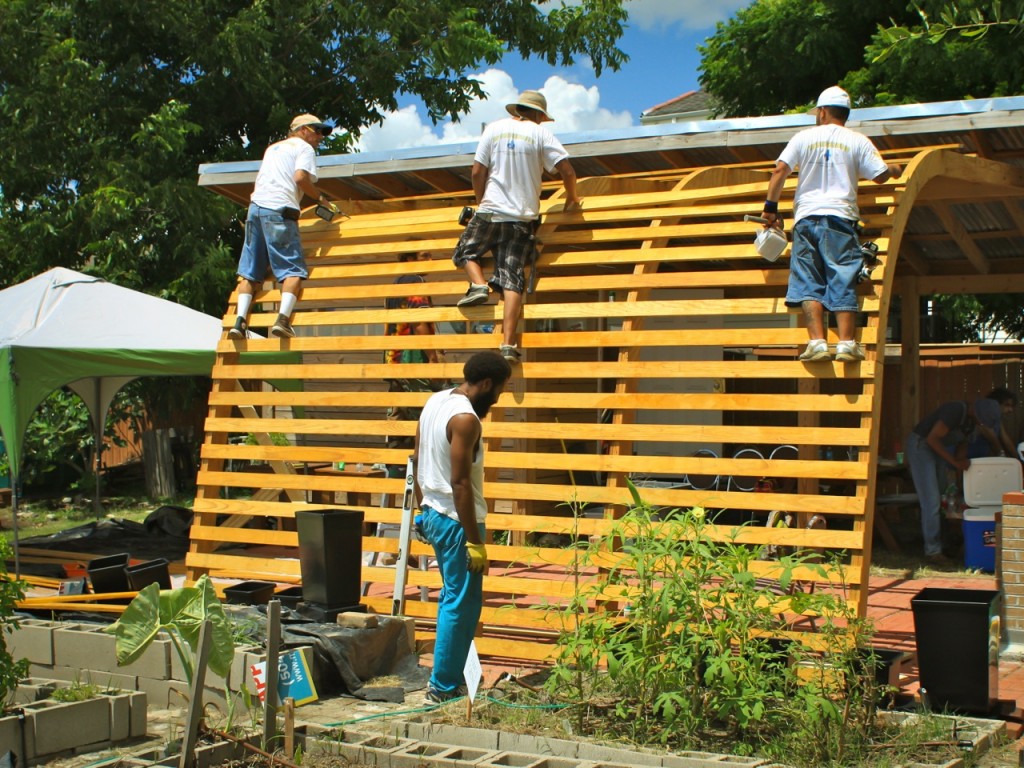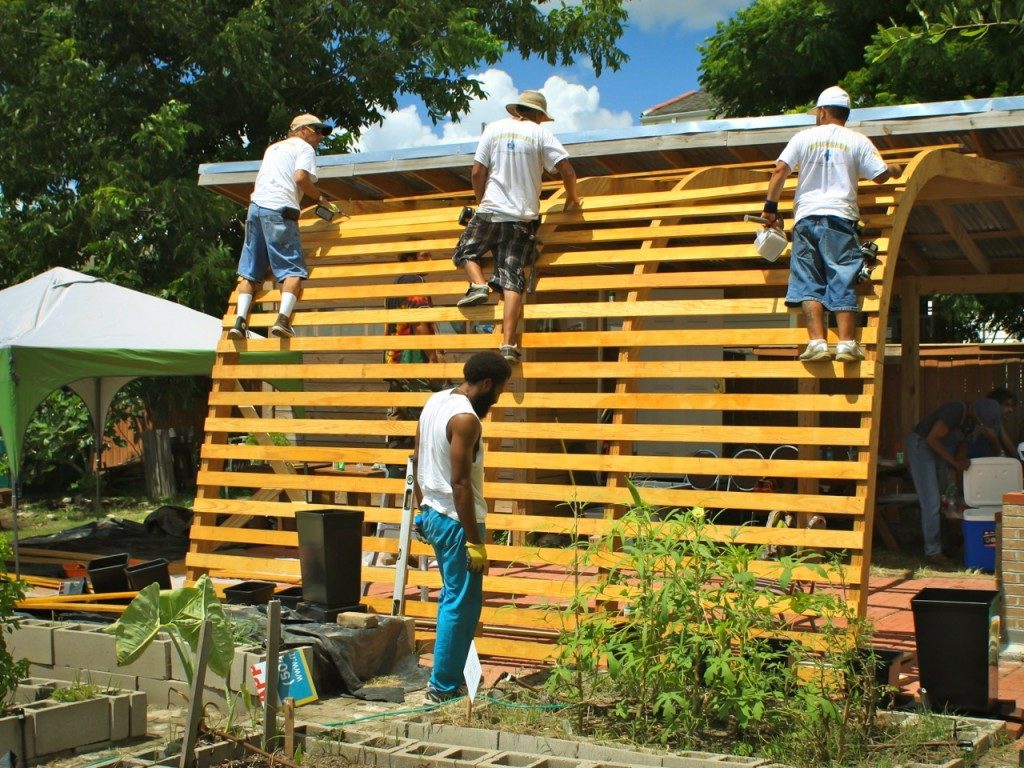 By Tina Dirmann
By Tina Dirmann
staff writer for BCBSLA Foundation
This is a story of rebirth, renewal, regrowth. Just a snapshot of what a few determined individuals can do when they are committed to making a difference.
How fitting, as we note the 8th anniversary of Katrina, that we can tell such a tale today. For it was eight years ago when waters ravaged New Orleans. And, in particular, devastated the tight-knit community that made up the Lower Ninth Ward.
In the days before Katrina hit, there stood an empty lot – that kind that proliferates the still devastated community today. But before the storm, this lot in particular meant something to people. You see, one resident used to take the time to toss seeds into this lot. At times, tomato seeds. Sometimes okra. A little of this and some of that. Nothing formal. No one tended to the yard in any particular way. And yet, produce often grew large and proud. And what cropped-up was there for the taking. Anyone in the community was welcome to it.
 That tradition was almost lost in the storm’s wake, just another casualty amid so much other loss. We know some residents never returned. Weeds still stand overgrown on vacant lots. Community stores and bars and gathering spots simply fell away.
That tradition was almost lost in the storm’s wake, just another casualty amid so much other loss. We know some residents never returned. Weeds still stand overgrown on vacant lots. Community stores and bars and gathering spots simply fell away.
But in 2009, one woman in this shaken community remembered that garden, and she wanted it back. Because in her neighborhood, fresh produce can be hard to come by. There aren’t thriving farmers markets. No Whole Foods and Rouses offering fresh fare – let alone anything affordable.
And so, 9th Ward resident Jenga Mwendo founded the Backyard Gardener’s Network, a non-profit dedicated to reviving and sustaining the lot they’ve now dubbed “The Guerrilla Garden.” Her group gathered enough funds to buy the lot at 601 Charbonnet Street and not just return it to what it once was – but to take it a step beyond.
“Our vision for the Guerrilla Garden is for it to be a vibrant green space where our community can come together and share and learn from one another,” Mwendo said. “It’s about community building, community ownership, eliminating blight and improving food access by leaning on our own cultural traditions.”
Enter Marianne Cufone, who heads up the local division of the Recirculating Farms Coalition and serves as project leader for Growing LA (a Blue Cross and Blue Shield of Louisiana Foundation initiative supported through our Challenge for a Healthier Louisiana grant program).
Cufone witnessed Mwendo and her team working to breathe life back into this overlooked patch of land. They put up benches, installed a fence, and tended to weeding and watering every day.
“They really did turn it into a formal garden,” Cufone said. “They really do care.”
 A quote from the Backyard Gardeners Network website sums it up best: “We strive to sustain and strengthen the proudly self-sufficient and deeply rooted community of the Lower 9th Ward. Using our own food growing traditions and tapping our fiercely self-reliant spirit, we will revitalize our devastated neighborhood and preserve our cultural heritage.”
A quote from the Backyard Gardeners Network website sums it up best: “We strive to sustain and strengthen the proudly self-sufficient and deeply rooted community of the Lower 9th Ward. Using our own food growing traditions and tapping our fiercely self-reliant spirit, we will revitalize our devastated neighborhood and preserve our cultural heritage.”
And so, how did Growing LA offer a lending hand?
“I asked them, ‘What do you need, what can we do,’ “ Cufone said. “And they said right away, ‘Shade. We desperately need shade! People come out to work now and they just roast. We have nothing, no protection at all.’ “
Cufone and her team got to work last Saturday, building what she calls “a living shade structure.”
In fact, the structure is the first of its kind in the city. It’s a solar-powered hydroponic system.
Say what?
Okay, follow us here… The wooden structure is installed with solar panels. Then, vine plants cover the structure (grapes, luffa). The plant roots are then sustained using collected rain water, which is pumped back to the plants using solar power energy. More than 30 members of the community showed up to work on the structure, Cufone said.
“That was the coolest part,” she said. “We had people from all different backgrounds and interests coming together to pull weeds, hammer, build, paint, whatever needed to be done. Everyone worked together.”
There are now plans to eventually add a lighting system, operating off the same solar energy, so the community gardeners can work at night, too.
“Everyone who has had a hand in creating the Guerrilla Garden should feel proud,” Mwendo said. “Among all the blight and devastation that still stains our neighborhood, there are places like the Guerrilla Garden that represent self-determination, pride, and resilience. We will not bow down and we are not resigned to defeat.”
The entire system only cost about $5,000. But to the Guerrilla Gardeners, the true worth is incalculable.
The group is now gearing up to start selling their own products, driving it into neighboring communities with thriving farmers markets. Perhaps using the luffa to make sponges. And those grapes? Why not Guerrilla Garden wine? It could happen, Cufone said.
“Wouldn’t that be just great,” she said. “Guerrilla Wine from the Lower 9th!”
Indeed it would. And let us be the first to say, “Cheers to you, Guerrilla Gardeners! Cheers to you.”
